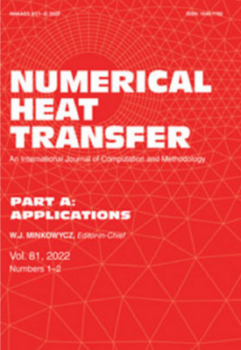The present investigation deals with numerical simulation of thermo-hydraulic transport characteristics of non-Newtonian fluid flowing through a wavy channel subjected to isothermal condition. The power-law constitutive model is adopted to illustrate the rheological behavior of fluid. The influence of various parameters like index of power-law (n), Reynolds number (Re), amplitude of sinusoidal profile (A), etc. on flow, thermal field, and entropy generation characteristics are delineated in detail. Furthermore, the outcome of the sinusoidal channel is compared with that of conventional straight channel in order to check the performance of wavy-wall channels. Results divulge that reliance of the thermo-hydraulic characteristics on wall geometry is unequivocally affected due to the amplitude of sinusoidal profile. Augmentation in heat transfer rate for lower values of amplitude of sinusoidal profile over the conventional channel is inconsiderable although difference upraises considerably owing to two factors namely: higher amplitude of sinusoidal profile and Re. The heat transfer rate diminishes with increment in power-law index. Consequently, heat transfer rate is progressively conspicuous for shear thinning fluids compared to shear thickening fluids. For comparison of pressure drop in the wavy and equivalent straight channel taking into account heat transfer and corresponding enhancement of pressure drop, we have defined a performance parameter. The comparison of performance parameter illustrates that shear-thickening fluids are more appropriate for engineering applications. Two nondimensional numbers are defined to elucidate the behavior of entropy generation with various parameters like Reynolds number, amplitude of sinusoidal profile, and power-law index. The entropy generation increases as the amplitude of waviness increases. Furthermore, entropy generation also intensify with increment in index of power-law for a distinct Reynolds number and amplitude of waviness. Results obtained from present study can be used as a tool to select wall geometry for design of compact and economical energy exchange devices dealing with non-Newtonian power-law fluids.
https://doi.org/10.1080/10407782.2021.1929288


